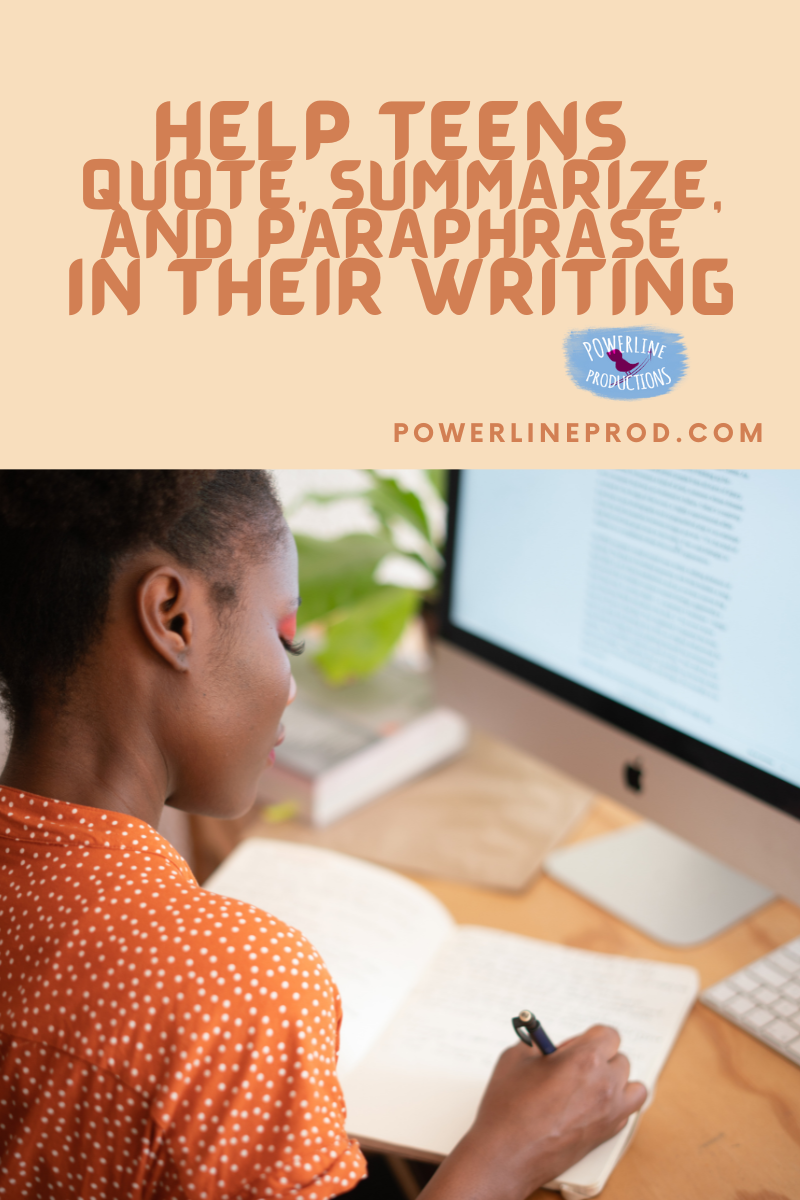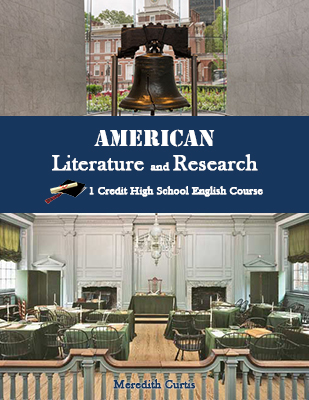As children get older, they move to more formal writing with sources of information. This brings them closer to write research papers that include endnotes or footnotes.
Oh, no!
Did I lose some of you! Don’t stop reading! I’m going to make this simple!
Parents and teens can get overwhelmed when research, sources of information, works cited pages endnotes, and footnotes come up! I’m here to make it simple for you to do with your students.
Add Credibility to Writing
Why do we even bother with using other sources of information?
Citing sources other than our own thoughts and ideas gives us credibility.
Often, I quote from Scripture in my articles or books. I don’t want my readers to think I said it because it’s God’s Word! So, I cite the book, chapter, and verse in the Scripture.
When writing a report, essay, or research paper, students often come across something that they want to share in their writing.
Quotations

People say things that are so memorable or powerful, expressing the point so perfectly that the writer doesn’t want to change a thing.
Students can use quotations around the quote and cite the source in their paper.
Quotations emphasize the author’s opinion if you want to agree or disagree with it in a paper.
Using quotes from different authors who disagree can show that you are considering varying perspectives.
Using a quote from a respected authority supports the writers own opinion and gives his ideas credibility.
It’s great if you can get an author’s opinion that challenges the status quo or stands alone from other experts in the field you are exploring.
Summarizing
When your students comes across a long passage with lots of great ideas she wants to use, she can summarize the passage to use in her paper.
A summary is much shorter than the original passage. It focuses on the main points, not the details.
Even though a summary is in the student’s own words and only a fraction of the main writing, students still must cite a summary.
Paraphrasing
Have you ever read something and said to yourself, “Yes! That’s exactly what I have been trying to say!”
If you put what the author has to say into your own words, you still have to cite your source.
Paraphrasing is an author’s best friend. It’s simply putting an author’s ideas into your own words. When the details are important to the writer, he can paraphrase, sharing with his own voice, but still giving credit to the author.
Paraphrasing works best when the details are important for the writer to include in his paper.
Give Credit to Sources of Information
Citing is simply giving credit to the sources of information.
The basic guidelines for citing sources is listing the author, title of source, page number, date of publication. If it’s an article or online source you should also include the URL and the date accessed.
There are basically two methods of including the source in your paper: MLA and APA.
MLA uses parenthetical citations where information on the source is included in parentheses at the end of the sentence (before the period). With MLA, you might just put the author and the page number in the parentheses because all the rest of the information will be in your works cited page.
For APA format you include author and date in the parentheses. The complete information on each resource will be found at the end of the paper in your reference list.
Here is a resource I use regularly for teaching writing. The OWL (Online Writing Lab) at Purdue University. https://owl.purdue.edu/owl/index.html
What about footnotes and endnotes?
It is surprising for me that footnotes and endnotes and no longer used to cite sources. However, you can use footnotes and endnotes to add extra information that just doesn’t fit into the body of your paper.
How to Start Slowly with Younger Children
Here are some painless easy ways to introduce your children to sources in writing:
When you are reading a living book or textbook with a footnote or endnote, point it out and read it to them. Explain why it was put into the book.
If you read a quote from someone, read it to your child and tell them who said it. Show them the quotation marks that define it as a quote.
When you are grading an older child’s essay or research paper, show your younger children the Works Cited page and then some of the quotes or paraphrases in the paper. Tell them, “You’ll get to do that when you’re older!”
You see nothing elaborate, just pointing out things that we gloss over every day.
The idea of working with children and teens is to lead them from success to success to success. So, start small and work toward the end goal of using sources in an effective and interesting way to give credibility to your essays and research papers.
A Course that Teaches Everything We’ve Been Talking About
Still Feel unsure about teaching these things to your teens. Why not learn these things plus how to write a research paper step-by-step and read some great American literature? American Literature & Research is a one-credit high school English course. It works at home or in a homeschool co-op.
Purchase American Literature & Research at PowerlineProd. It’s available in print at Amazon.

Until next time, Happy Homeschooling!
Warmly,
Meredith Curtis
Welcome to the Homeschool Giveaway!
We’ve teamed up with bloggers who share your passion for creating an enriching homeschooling experience. As a token of appreciation for the amazing homeschooling community, two families will each receive a $75 gift card to support their teen’s homeschooling journey.
How to Enter:
Entering is a breeze! Click on the Rafflecopter link at the bottom of the blog this page , follow the instructions, and you’ll be in the running to win a fantastic gift card!
Important Details:
- Entries accepted through January 16, 2024.
- Winner announcement shortly after.
- For all terms and conditions, refer to the Rafflecopter.
If you have more questions, read the Terms and Condition on the Rafflecopter.
We understand the dedication it takes to homeschool, especially when your teen is your focus. This giveaway is our way of saying thank you for being part of this incredible community.
Feel free to share this news with your fellow homeschooling friends. The more, the merrier!
Best of luck in the giveaway!
